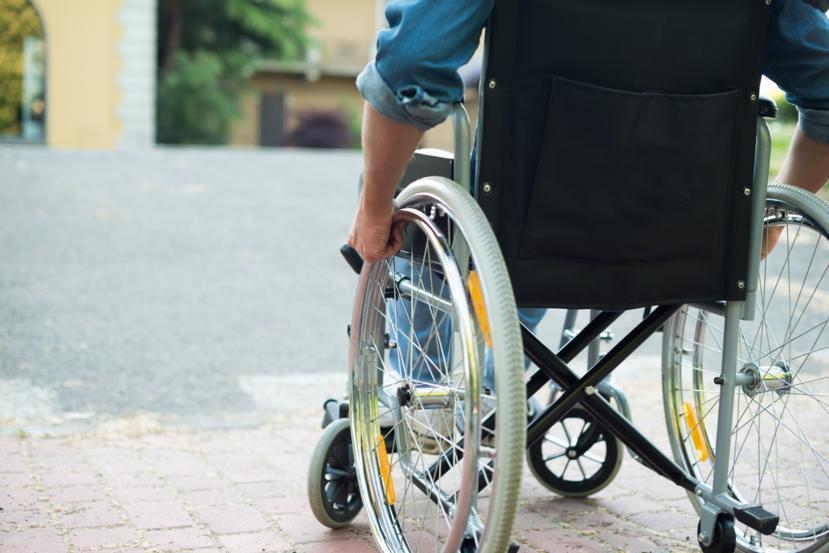Steroids for Muscular Dystrophy: Prednisone

Steroids are touted as powerful drugs that help in improving muscle strength as well as delaying some types of muscular dystrophy. Of these, prednisone is said to be the most powerful and widely used to treat Muscular Dystrophy. Prednisone is a known anti-inflammatory agent. The potent compound, sold under numerous brand names, is gaining popularity as means to treat muscle dystrophy in a number of countries worldwide. It had developed a growing following of users who take it to help in strengthening their muscles.
Common brands
Prednisone is alternatively referred to as Deltasone, Prednicot, Rayos, Sterapred DS, predniSONE Intensol and Sterapred.
Why Steroids for MD patients?
Steroids are chemicals or hormones that are needed in your body to help cells, and organs such as the heart to function properly. Steroids are generated naturally by the body or made synthetically in form of medicines.
How prednisone works
Prednisone suppresses the body's immune system, stabilizing the system if it is overactive. What the drug does is to reduce the inflammation such as swelling, heat, restlessness, and pain by preventing the release of a substance in the body that causes the inflammation.
How do they help?
The catabolic steroid acts by breaking down the tissues, unlike anabolic steroids which builds the tissues. This action helps muscle dystrophy patients compensate muscle loss. Therefore, the paradox explains why researchers believe it is due to the immunosuppressant and anti-inflammatory effects of the catabolic steroid. Prednisone works similarly to hydrocortisone, by breaking down tissue to release glucose and activate energy in reaction to any threat or stress. Additionally, it helps fight inflammation through suppressing the immune system. According to some researchers, prednisone may help in stimulating muscle protein production.
Did you know that catabolic steroids are released from the cortex which is the outer part of the adrenal gland? And they are also called "glucocorticoids" or "corticosteroids", because of the releasing effect of energy or glucose when responding to danger or stress.
Prednisone dosage
Take the dosages as prescribed by your doctor. The chart below is a guide but not the actual dosage recommendations. Take your medicine with food. If you are on prednisone, carry a note with you so that any doctor who treats you besides your regular health expert may know that you are on steroids.
Anti-inflammatory - Adult
5 to 60 mg per day in split doses, 1-4 times per day.
Anti-inflammatory - Pediatric
0.05 to 2 mg per day split 1-4 times per day
Immunosuppression - Pediatric
0.05 to 2 mg per day, split 1- 4 times per day
What to avoid while taking prednisone
Do not drink alcohol while on prednisone drugs. Also, avoid receiving live vaccines such as yellow fever, measles and mumps which may exacerbate the side effects. Certain drugs like St. John's wort, cyclosporine, digoxin, digitalis, and amphotericin B interact with prednisone. So, inform your doctor on what medications you are prescribed.
If you have a history of diabetes, kidney disease, or recently suffered malaria, fungal infection or tuberculosis, prednisone may aggravate the infection.
Prednisone reviews
Within online communities, some have found prednisone to be highly effective but a fair number also had negative experiences. You can look at some of the selected testimonials:
- Some said they could barely walk or bend before taking prednisone. After being prescribed with 40mg of prednisone for 4 days and then tapering off, they felt like new people. In two days, one patient said she felt like a new person and all her pain was gone. She said she would take it daily if not for the possible side effects. She calls it a miracle drug.
- Another patient had sore wrists, neck and groin pain which was on and off for close to six months. He almost became totally disabled. After speaking to an Osteopath who recommended the prednisone drug, he then agreed to try it and just after a few days of 15mg/day the acute pain went.
- A third patient said her heart rate was up from taking prednisone and felt like her blood pressure was up too. She had trouble getting words out and felt very anxious. Furthermore, it was hard for her to sleep.
Benefits and effects: Prednisone has a number of scientifically proven benefits that include:
Strengthening of muscles: Some trials have shown that giving weekly doses of prednisone stimulates a molecule called KLF15, which is useful in improving muscle performance. The production of a protein called annexins then stimulates muscle healing.
Suppresses the immune system: When the immune system overreacts it causes inflammation. The medication has an anti-inflammatory effect. It dampens down the inflammation. When responding to inflammation and stress, corticosteroids help suppress your immunity to help your body.
Slows progression of the disease: Muscle wasting leads to wheelchair dependence or possibly death. Taking prednisone may delay this for six months to two years, although the evidence of the drug's efficacy beyond two years may be limited.
Side effects of prednisone
It is a useful agent for allowing people with muscle dystrophy to remain mobile as long as possible, but it isn’t a sure thing, and there are some varied outcomes like increasing fracture risks that dispute some of the claims that advocates make about prednisone. Some of the possible prednisone side effects include heartburn, trouble sleeping, acne, increased sweating, confusion, nausea and loss of appetite.
Other serious effects may include swelling hands or feet, muscle cramps, eye pain, weight gain, low sex drive, abdominal pain and mood swing (depression). Nevertheless, a majority of people use the medication without experiencing serious side effects. Otherwise, a doctor would prescribe the medication after a proper judgment of your ability to benefit from use rather than the associated risks.
What happens during prednisone withdrawal?
Withdrawal occurs in individuals who have used prednisone for sustained periods of time in small doses. Prednisone is not addictive, but reducing doses too quickly or stopping the drug altogether can lead to withdrawal. Symptoms of withdrawal include severe fatigue, joint pain, body aches and general weakness. With the help of the doctor, taper the doses to avoid withdrawal symptoms. Consider doing the following to ramp up your body’s cortisol production:
- Avoid stressful circumstances
- Get enough sleep
- Eat healthy foods
- Reduce caffeine and alcohol
Prednisone is similar to cortisol. Why? Cortisol is a hormone that controls how you respond to stress, and regulates your blood pressure and heart rate. When prednisone exists in your body for 3 or more weeks, then your body responds by lowering the amount of cortisol it generates naturally. So when you eliminate prednisone, it takes time for cortisol production to be adjusted by the body. Stopping abruptly makes the body produce cortisol right away in order to compensate for the loss leading to prednisone withdrawal.
Closing thoughts
If you’re looking for a medication to improve your ability to rise from the floor, prednisone might be worth a try. Many patients have seen the benefits of taking the steroid. However, it is important to talk to your pharmacist or doctor before taking the drug. Providing your medical history will allow these professionals to determine if prednisone is safe for you.
If you have allergies, tell your doctor since the medication may have inactive ingredients that can cause allergic reactions or other complications.














